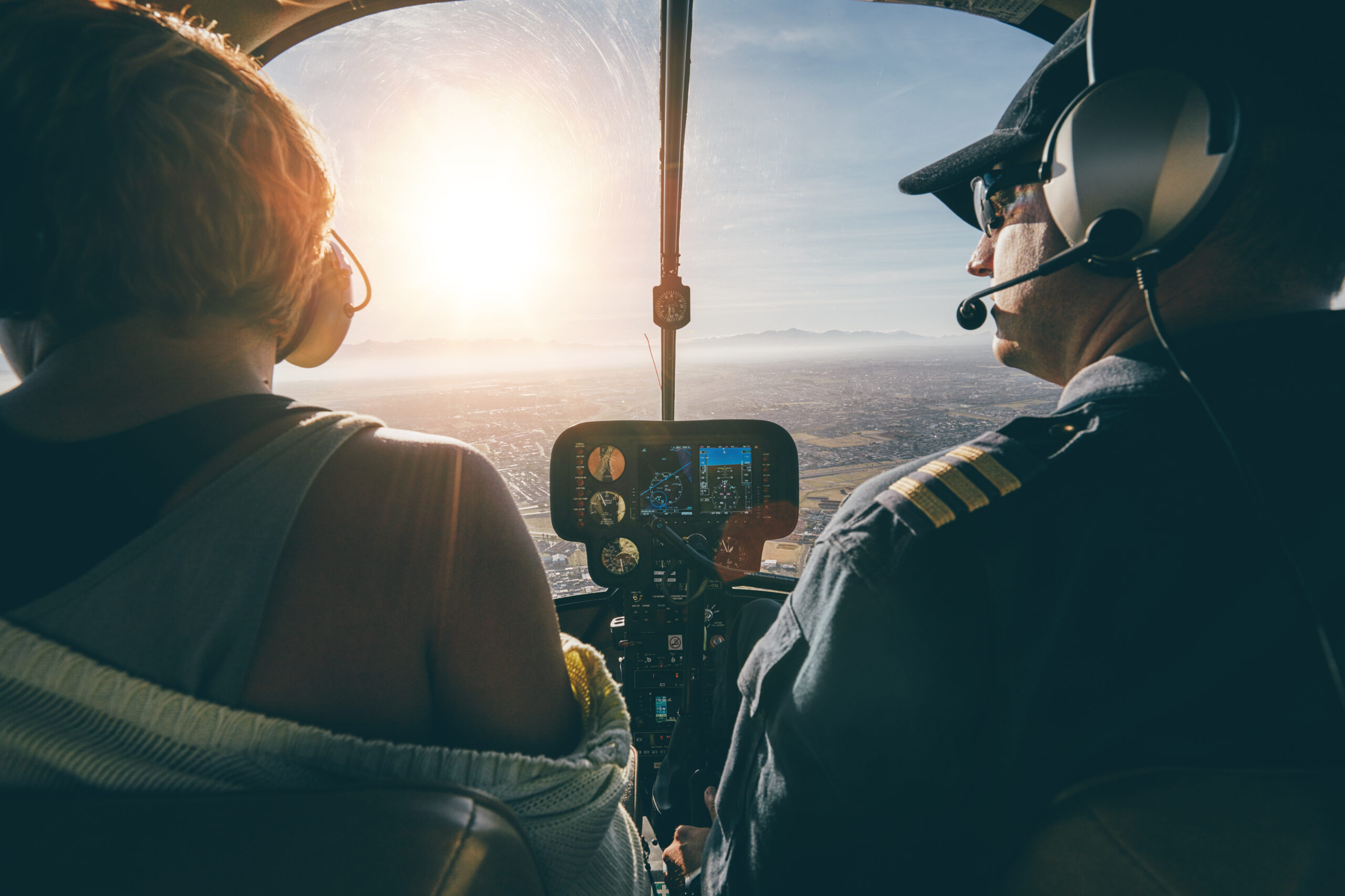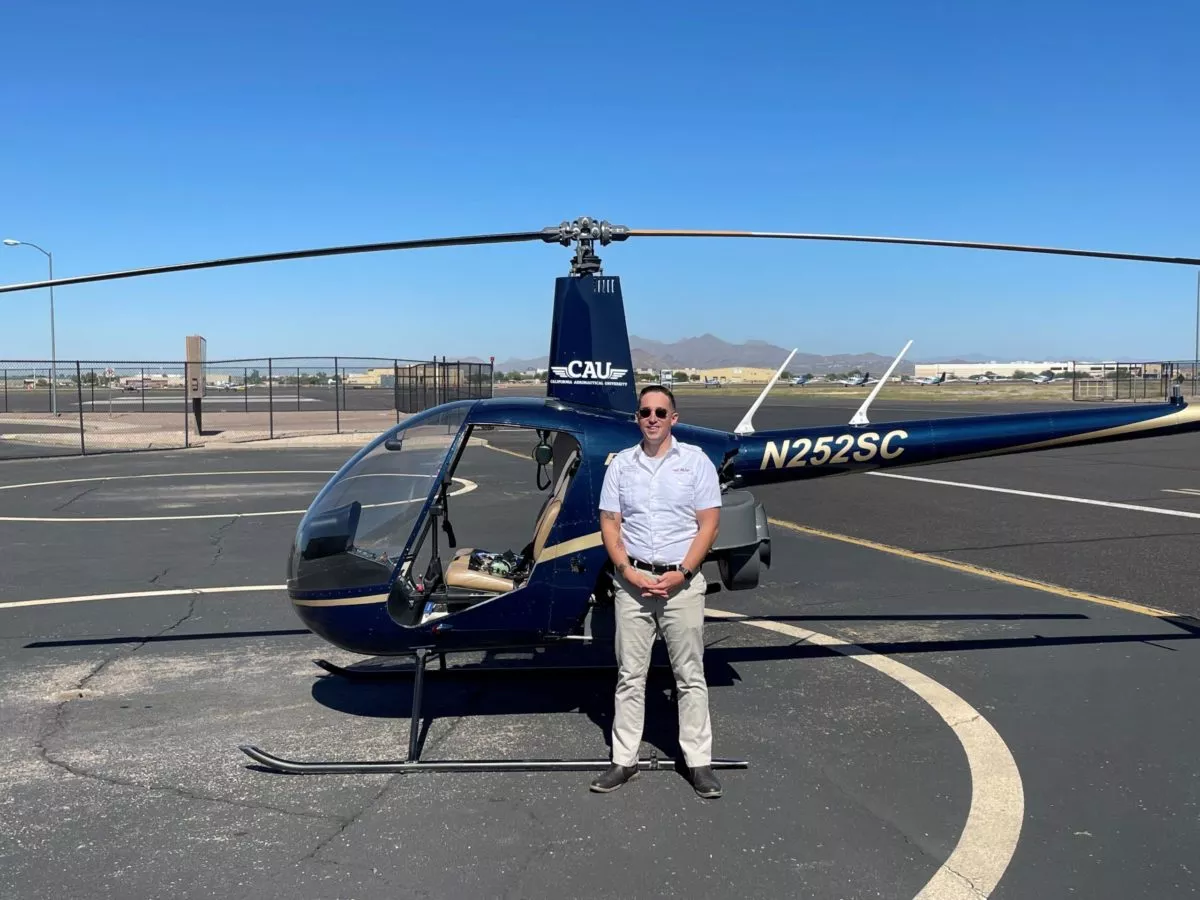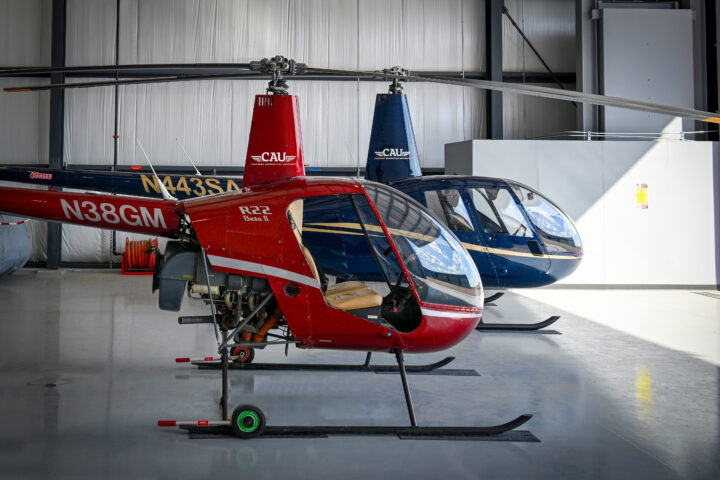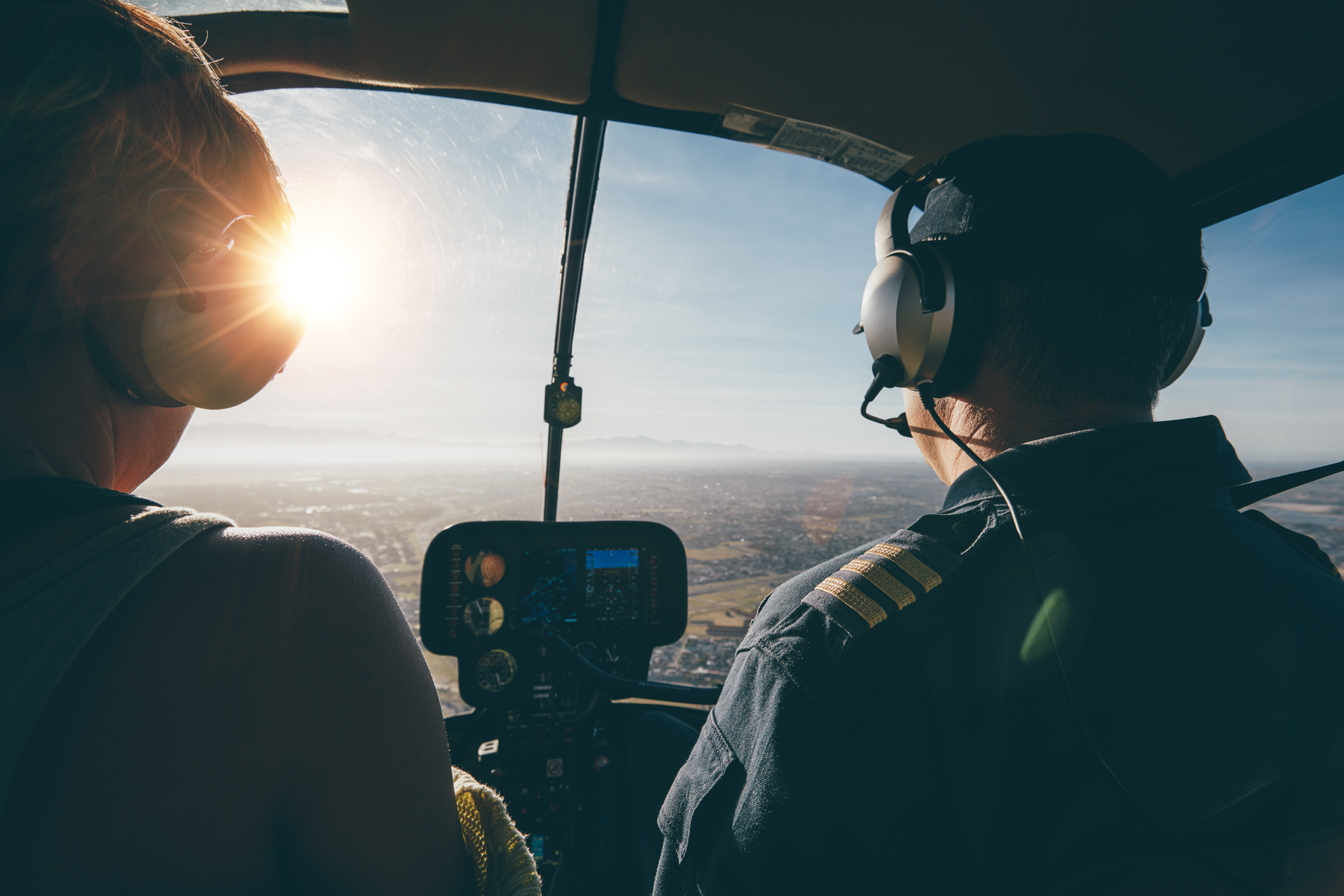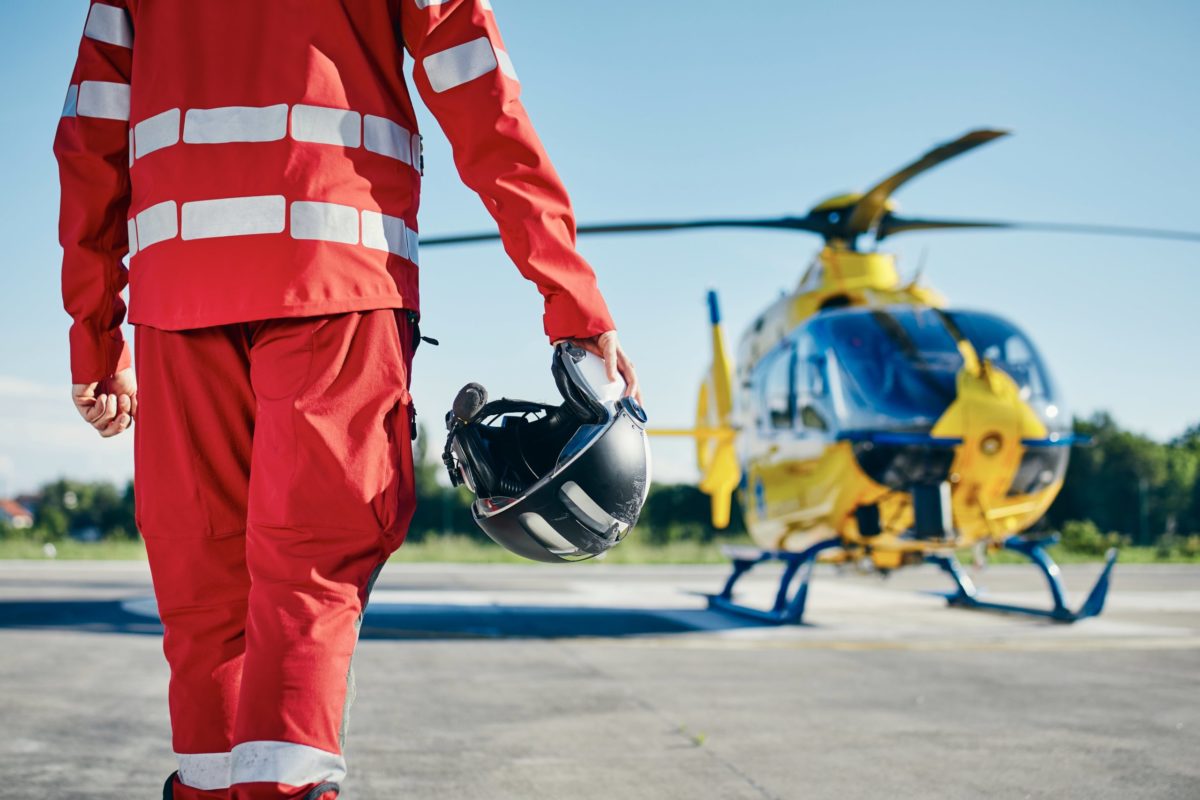Ask anyone who flies an airplane, and they will say a large part of the fun is looking down at the world below. It doesn’t matter if you’re overflying a city, rural countryside, mountains, desert, or coastline. In a helicopter, it is even better. One reason is that according to FAA regulations, a helicopter can fly lower than a fixed-wing airplane. They also can stop mid-air, hover, and climb or descend vertically, making the view uniquely yours. That raises the question: How do I become a helicopter pilot?
Understand Helicopter Aerodynamics
One of the first things to know is that helicopter aerodynamics, and the machinery that enables a helicopter to fly are more complicated than those of fixed-wing airplanes. 36 years transpired between the Wright brothers’ first airplane flight and Igor Sikorsky’s first helicopter flight.
Helicopters are called rotor-wing aircraft because the rotor blades are wings that generate lift and the aerodynamics to climb vertically when rotating fast enough and at a pitch angle. The pitch angle must change as the blade rotates to provide an equal or unequal lift on the rotor disk for maneuvering. The torque of the spinning rotor blades mechanically tries to spin the cabin or fuselage of the helicopter in the opposite direction. The helicopter’s tail rotor’s purpose is to counter the rotor blades’ torque.
As a helicopter pilot, you must understand the forces acting on the aircraft, and this is where academic learning is essential and required. Additionally, you must understand the FAA rules and regulations for helicopters and how that mechanical machinery works to enable the helicopter to fly. That’s why you want to learn ground school information from an academic institution with the tools to specialize in this training, such as California Aeronautical University (CAU). Learning and internalizing what you will be taught at that school is fascinating. You will collect knowledge most people don’t have.
Understand Helicopter Cockpit Controls
The controls in a helicopter cockpit are different from those in an airplane. You must familiarize yourself with the helicopter flight manual and the aircraft’s operating limitations. Helicopter pilots typically fly from the right-side seat. The helicopter flight instructor occupies the left seat. Both of you have access to the flight controls. A lever mounted on the cockpit floor to your left, between the seats, is called the collective. The end of the lever has a grip that twists, just like the throttle on a motorcycle. The control stick between your knees or in the center of the cockpit with handles on the left and right is referred to as the “T bar” in the Robinson 22 helicopter, which is used as the primary training helicopter at the California Aeronautical University, is called the cyclic. Once you understand why everything works the way it does. By the way, the Robinson R22 is the world’s most widely used civilian training helicopter.
Now back to the cockpit: Use your left hand on the collective to control the throttle and change the rotor’s pitch and blades, which control the helicopter’s ability to climb and descend. Operate the cyclic control with your right hand to control the direction of flight, forward or backward, left or right. The rudder pedals control the tail rotor and the direction the front of the helicopter is pointed towards.
Be warned that these controls are very responsive and do not require much movement. As one instructor said, “Don’t think about movement, just think about control pressure.” When you first fly a helicopter, it is easy to over-control, and with a bit of experience, you will soon have mastered control of the helicopter, like all those before you.
Understand Hand/Foot Coordination
Flying a helicopter requires skill and deliberate coordination of both hands and feet. The helicopter, you, the pilot, have to make it fly. The interaction between pilot and machine is undoubtedly part of the appeal of helicopter flying, the reward of mastering the machine is a very satisfying experience.
You can achieve that goal and repeat that satisfying experience for the joy of it, which can be expensive, or you can make a career out of flying helicopters commercially for an exciting lifestyle that will be the envy of many. It is up to you to commit and act to get it done.
How CAU May Help You Become a Helicopter Pilot
The instructors and staff at California Aeronautical University may help you become a helicopter pilot through its FAA-approved training syllabus, which will guide you through a logical order to academic learning and practical flight training. Financial aid is available. The university has a fast-track program and offers associate of science or bachelor of science degrees with an emphasis on helicopter operations.
The FAA pilot certificates available to you are in this order:
- Private Pilot Helicopter Certificate (basic recreational, not for hire flying)
- Helicopter Instrument Rating (enables you to fly safely in the clouds and low visibility)
- Commercial Pilot Helicopter Certificate (enables you to fly for hire)
Like all commercial pilot jobs, to be attractive to an employer and qualify for larger passenger and cargo helicopters, you must accumulate flight time and experience beyond your commercial helicopter certificate. Initially, the most common way to do that is to earn a Certified Flight Instructor Helicopter Certificate. This course is also taught at the California Aeronautical University, with financial assistance available. Aviation universities like ours offer far more than you’re average flight school. The school can also help with job placement counseling and even hires many of its graduates as helicopter instructors under the guidance of the FAA-approved helicopter training syllabus and senior staff.
Flying a helicopter is great fun and easily becomes an addictive passion. Helicopter rotor-wing aerodynamics are more complicated than basic-fixed aerodynamics. Control of the helicopter requires greater skill and constant attention than a fixed-wing airplane. A career as a commercial helicopter pilot depends on flight time and experience to move into larger helicopters. You can become a helicopter pilot with the guidance and training equipment available at California Aeronautical University. And remember, a job that follows your passion will hardly feel like work. Contact us with any questions, or apply here today.
Ready to soar in your aviation career?
Mr. Matthew A. Johnston has over 23 years of experience serving various roles in education and is currently serving as the President of California Aeronautical University. He maintains memberships and is a supporting participant with several aviation promoting and advocacy associations including University Aviation Association (UAA), Regional Airline Association (RAA), AOPA, NBAA, and EAA with the Young Eagles program. He is proud of his collaboration with airlines, aviation businesses and individual aviation professionals who are working with him to develop California Aeronautical University as a leader in educating aviation professionals.
